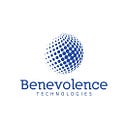Benefits of Document Automation for Healthcare
How much time do health care professionals spend on administrative tasks? A recent Medscape study showed that, on average, doctors spend more than 15 hours each week on paperwork! Despite recent technological innovations, the time spent dealing with such tasks has increased by more than 50 percent in the past five years.
Of course, some paperwork is necessary. But with more than a quarter of their time dealing with administrative tasks, it begs the question:
What if medical professionals could spend more time providing direct patient care instead?
And what about the people whose job it is to help with billing, coding, HR, supply orders, working with insurance providers, and other administrative tasks? They also play a role in patient care. Reducing errors and streamlining processes associated with patient records, staffing and billing can help reduce common frustrations among patients that sometimes cause delays in their care.
Automation offers countless benefits for healthcare providers on the front lines and in the back office, allowing them to focus on the reason they entered the healthcare field in the first place: patient care. Here are just five benefits of healthcare document automation.
1. Improve EMR functionalities
One reason healthcare professionals are tied up in time is incomplete patient information at the point of care or multiple records from different systems that are not shared with a provider. These data silos result in excessive time spent tracking information. More importantly, it can result in missing details that may be important to the patient’s treatment.
Information needs to be able to be transferred from one provider to another with the patient. An electronic medical record (EMR) system — sometimes called an electronic health record (EHR) system — helps securely maintain patient records. But other documents related to their care are usually filed elsewhere or not attached. ECM complements the functionality of the EMR by digitizing unstructured data, providing a one-stop repository that automatically provides a complete patient medical history.
2. Streamline scheduling
Many types of appointments have rules attached to them that help determine the time they take. For example, a new patient seeking pain treatment may need more time than an existing patient who comes in for an annual wellness exam. Automated appointment scheduling software is a key tool to help ensure providers are given enough time to see patients during their visits and avoid scheduling conflicts that accumulate during the day. are
Rules-based scheduling software that integrates with your EMR and online portal can help schedulers and patients make or cancel appointments more easily. Some software also sends automated appointment reminders via text, voicemail, or email so patients don’t miss appointments. They can also link to forms that need to be completed before their visit, which will automatically be linked to their records and ready and waiting on arrival.
3. Reduce human error and lead times
There is no substitute for a caring human touch and good bedside manner. But minimizing the human factor in other operational areas can reduce the risk of errors and improve treatment. Automated tools and advanced search features in medical repositories can also help providers diagnose and treat patients more quickly and accurately.
Healthcare networks can serve large communities or regions with technology that connects disparate systems, automatically suggesting which locations have appointments available for patient’s urgent care needs.
4. Save time and money
While many healthcare facilities take advantage of technology, a surprising number still use paper-based systems. Entry forms, faxes, and questionnaires are some examples. Ensuring these documents are entered into electronic systems on time often depends on manually keying information into various fields.
Automatic indexing uses machine learning to identify relevant information and can even recognize scanned text, allowing it to be sorted and routed correctly. At first, users may only need to verify data and, over time, machine learning improves based on previous actions to become increasingly accurate with each entry.
Certain repeatable business processes and routing procedures such as accounts payable, supply orders, HR onboarding, and others can be standardized. This helps reduce redundancy and start the process from scratch each time. Digital insurance claims and billing help reduce back-and-forth hassles while processing claims.
Time is money, and improved efficiency, less overtime, and greater employee satisfaction lead to cost savings. Reduced errors due to medical errors also translate into lower payouts. Strong automation allows each team member to do more during their shifts, adding more value to an organization.
